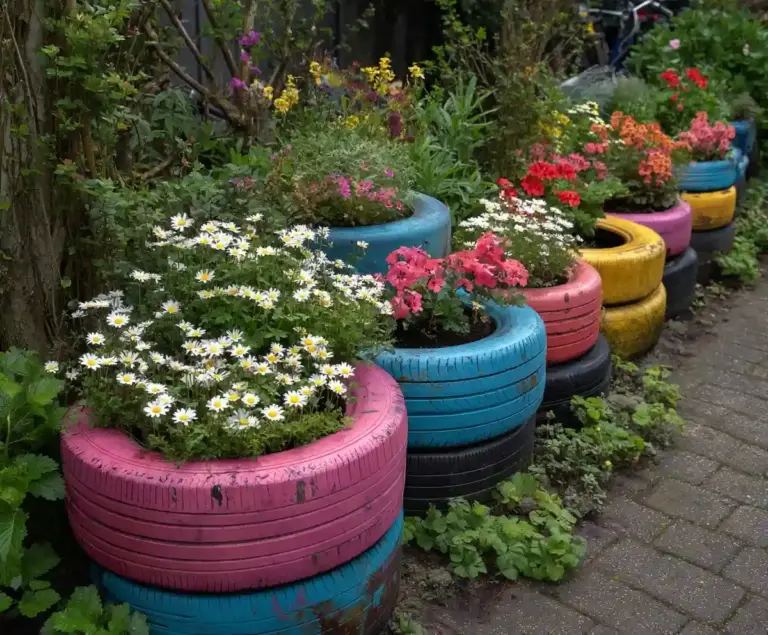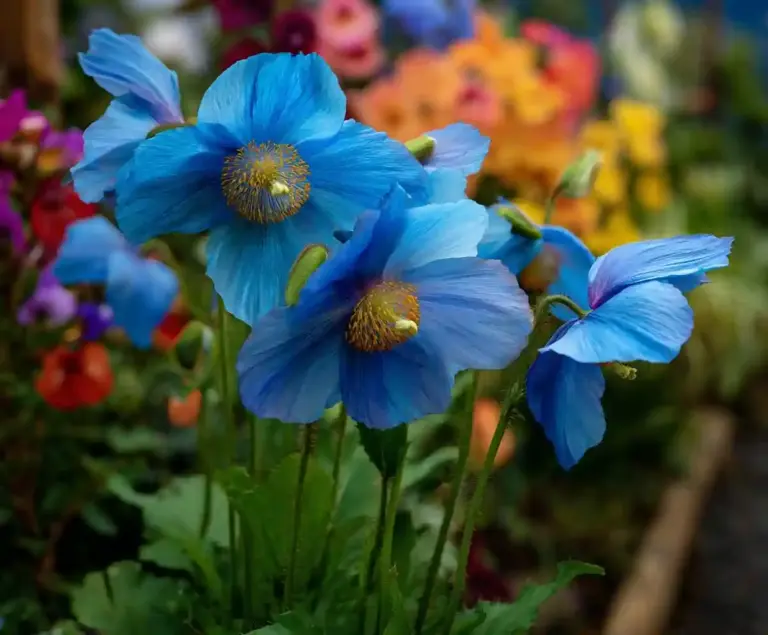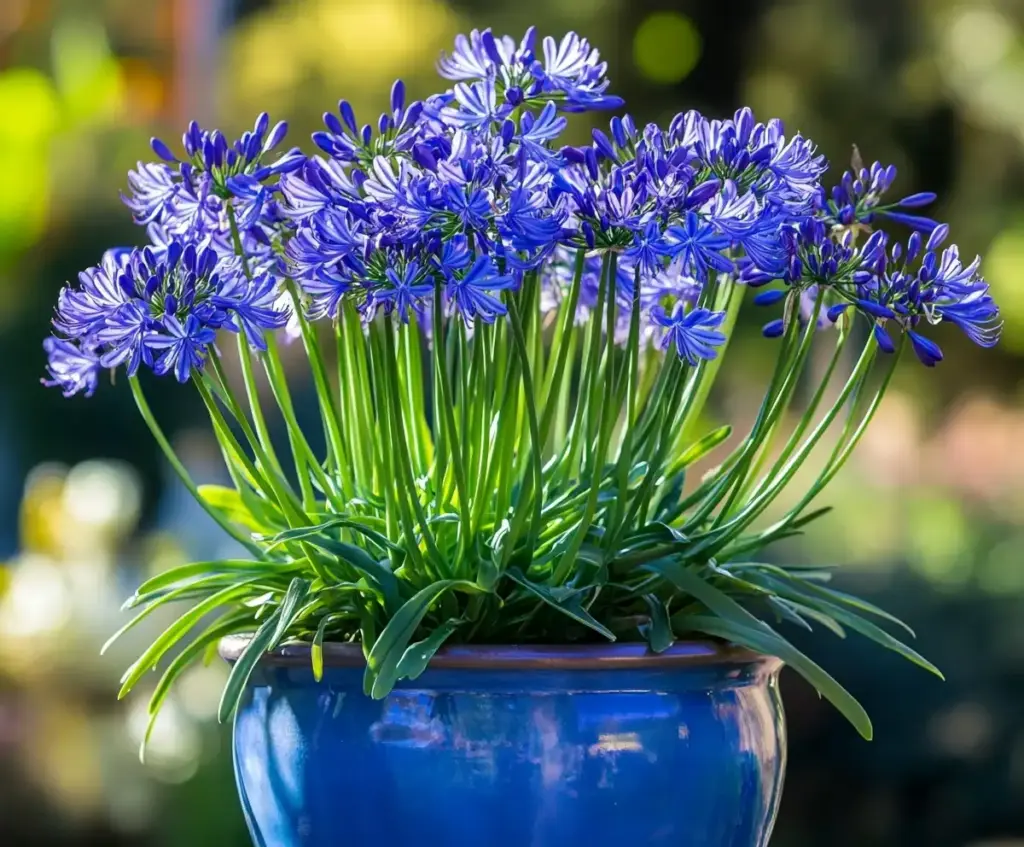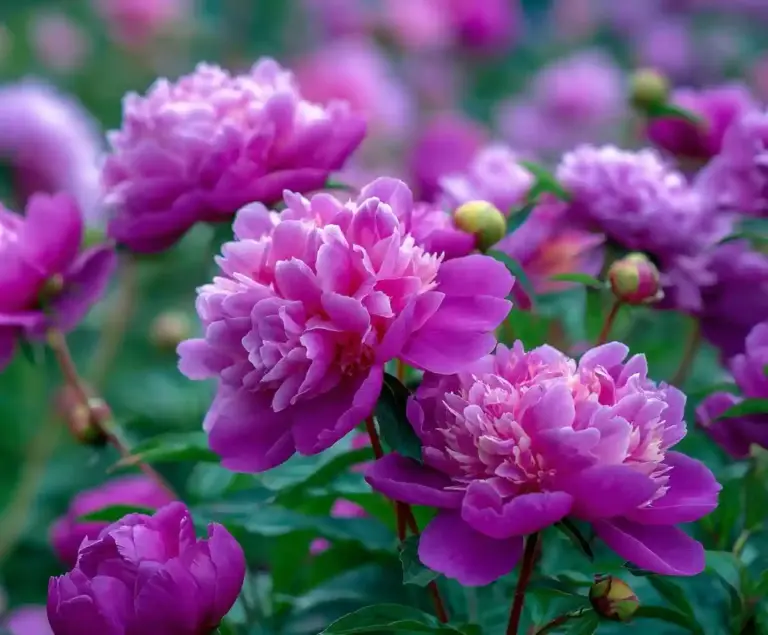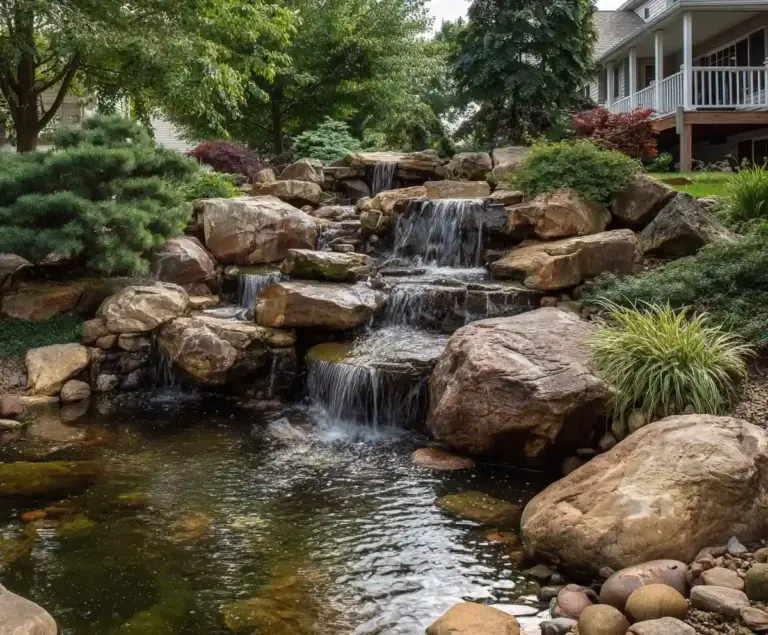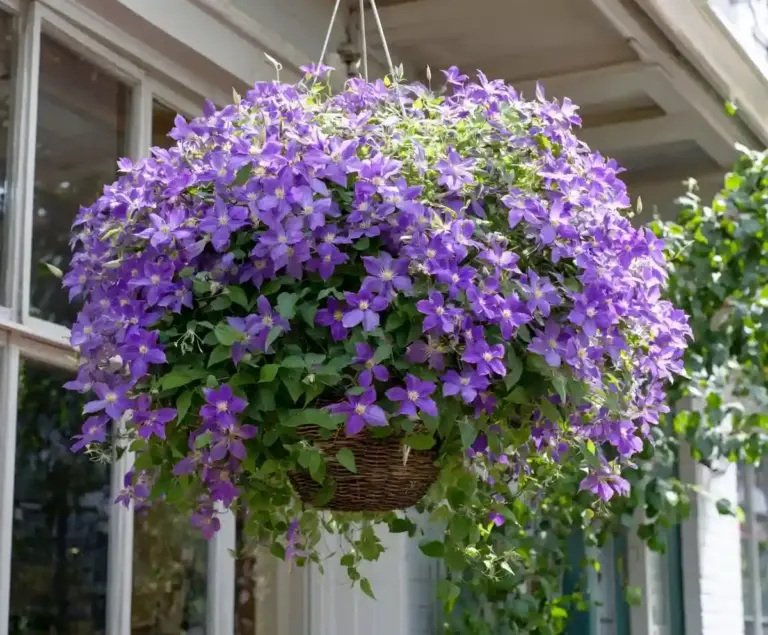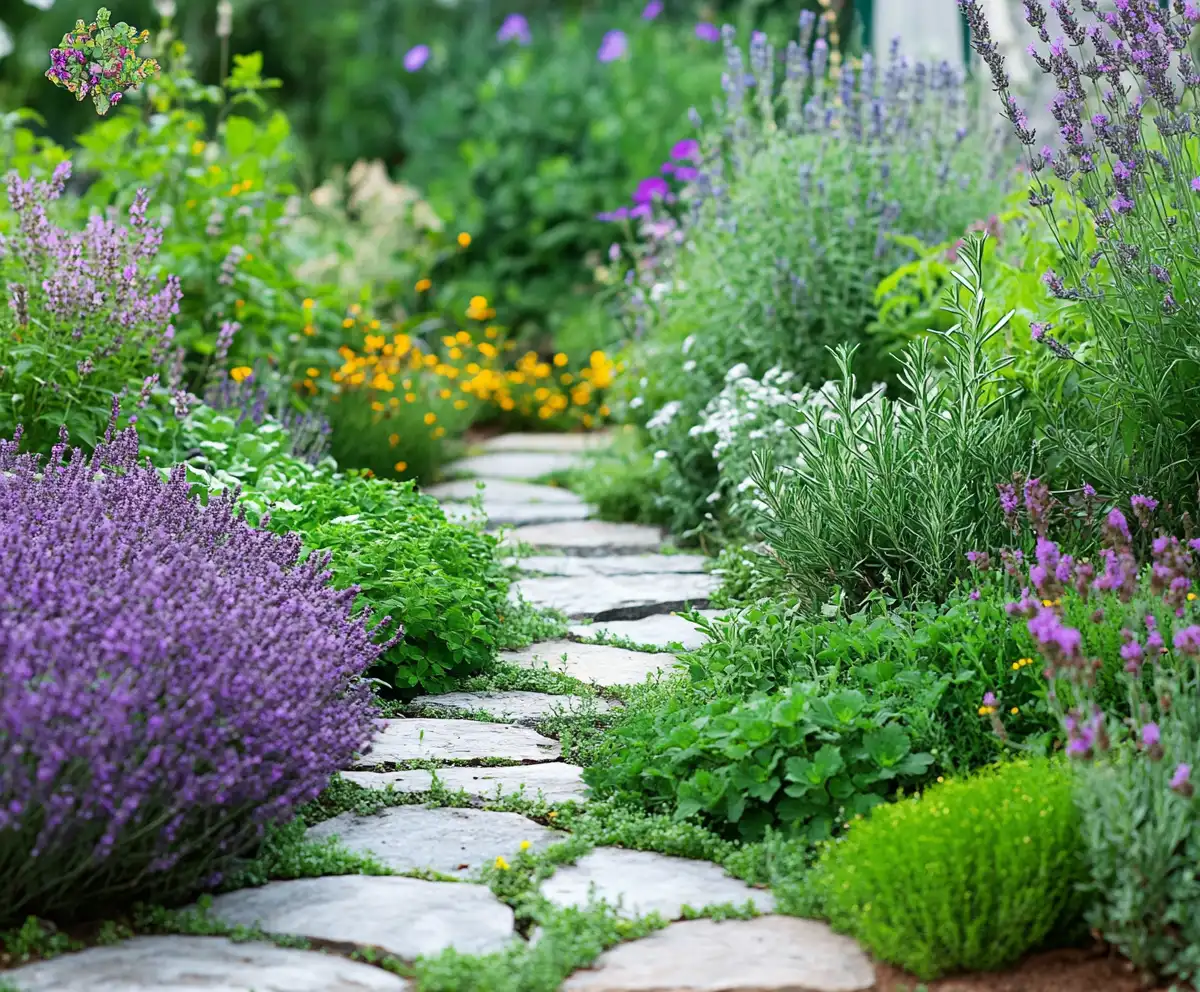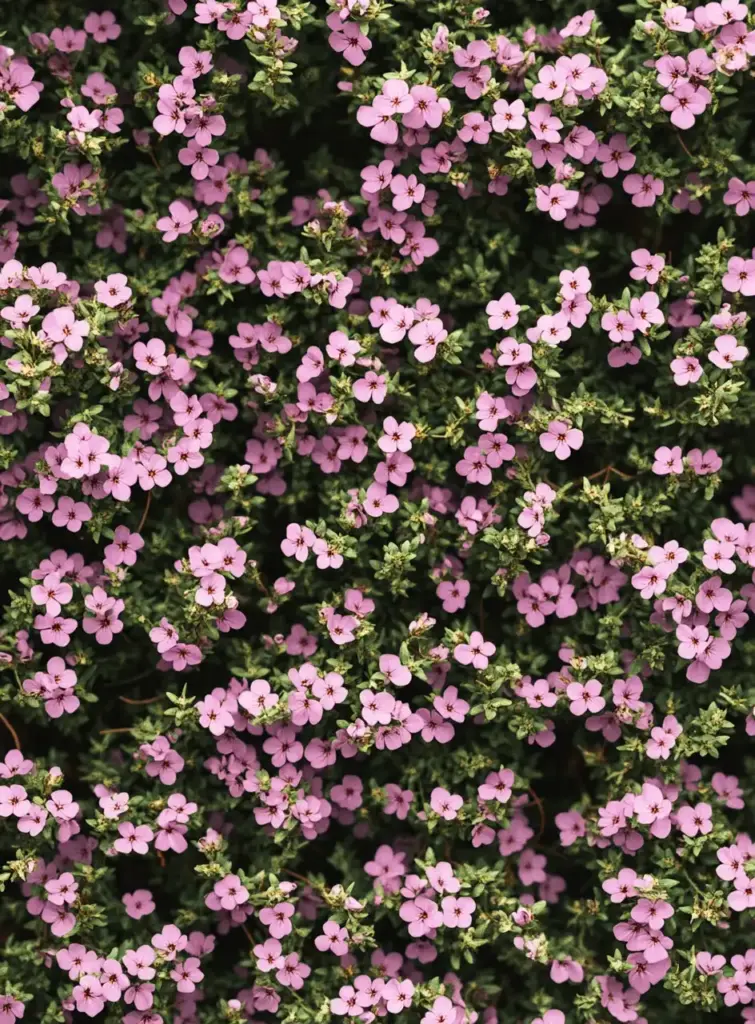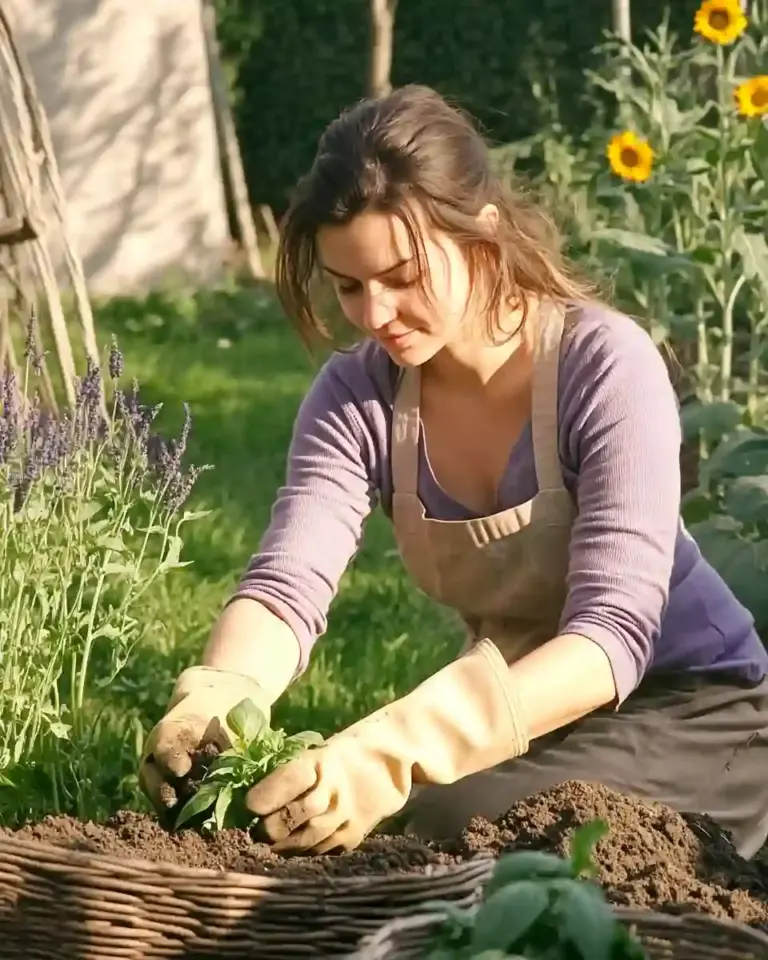If you’re dreaming of a garden path that’s both practical and picturesque, walkable ground cover plants are a smart solution. These low-growing, foot-traffic-tolerant plants add softness and color to your landscape while needing far less water and mowing than traditional grass.
Whether you’re planting between stepping stones or replacing a lawn, walkable ground cover creates a natural, inviting feel. Many varieties bloom, attract pollinators, and even release fragrance underfoot. For example, see how they enhance DIY walkway projects or pair beautifully with low-maintenance perennials.
In this guide, we’ll explore 15 of the best walkable ground cover options — each with tips to help you create a beautiful, durable garden path.
Table of Contents
1. Thyme (Thymus spp.)
If you’re searching for a fragrant, durable, and attractive walkable ground cover, thyme is a top contender. This resilient herb forms dense, mat-like foliage that holds up well under light foot traffic — and rewards every step with a burst of aromatic scent.
🌿 Why It Works
- Fragrant foliage: Brushing against thyme releases its signature herbal aroma.
- Mat-forming: Covers ground evenly and resists weeds.
- Low maintenance: Thrives in dry, sunny conditions and doesn’t need much attention.
🌼 Best Varieties for Ground Cover
- Red Creeping Thyme: Bright pinkish-red blooms and dense, trailing growth.
- ‘Elfin’ Mother-of-Thyme: Tiny leaves and compact form, great between pavers.
- Woolly Thyme: Silvery fuzz-covered leaves with a soft, moss-like look.
🌱 Quick Growing Guide
- USDA Zones: 4–9
- Light: Full sun
- Soil: Well-draining, sandy or rocky soil preferred
- Height: Up to 5 inches
- Bonus: Deer- and rabbit-resistant
Pro Tip: Try planting thyme between stepping stones — it will fill in gaps quickly and stay neat without spilling over too much.
2. Blue Star Creeper (Isotoma fluviatilis)
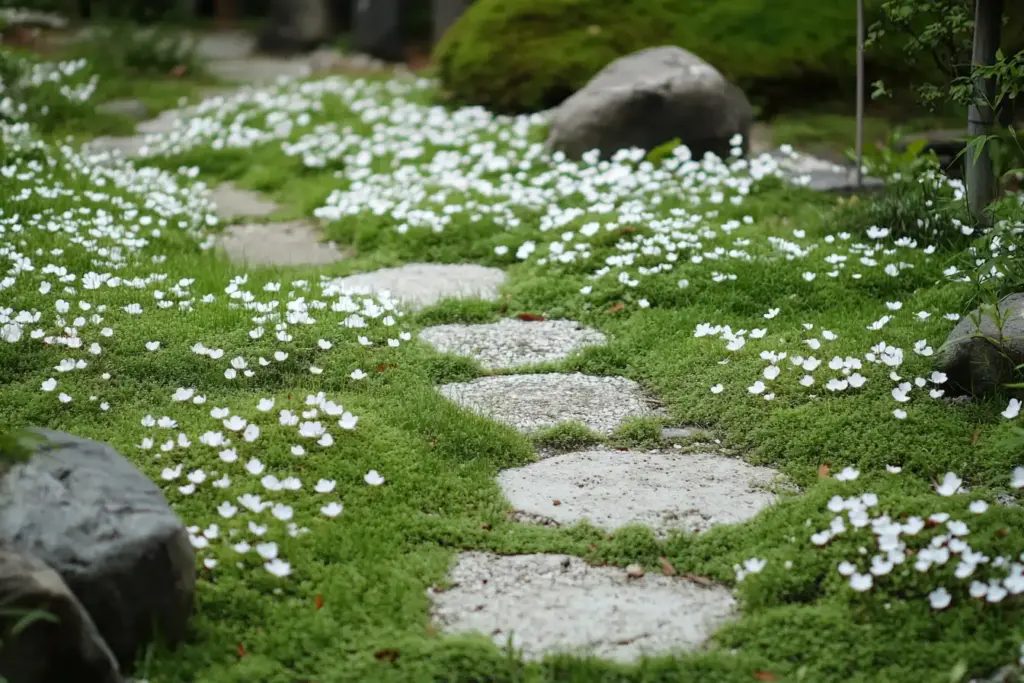
Looking to soften the edges of shady paths or fill gaps where grass just won’t grow? Blue star creeper might be your best friend. This low-growing perennial is known for its carpet-like spread and charming pale blue flowers that bloom from spring into early summer.
🌿 Why It Works
- Fast spreader: Fills in quickly with dense, weed-suppressing growth.
- Foot traffic friendly: Tolerates occasional walking with ease.
- Delicate flowers: Pale blue, star-shaped blossoms add seasonal color.
🌼 Ideal Uses
- Between stepping stones in partially shaded areas
- As a turf alternative for low-traffic lawns
- Around patios and garden borders
🌱 Quick Growing Guide
- USDA Zones: 5–9
- Light: Full sun to part shade
- Soil: Moist, well-drained
- Height: Up to 4 inches
Note: In cool, damp regions, blue star creeper can become a little too enthusiastic — keep it in check with edging if needed.
3. Sedum (Sedum spp.)

If you’re looking for a ground cover that thrives in hot, dry conditions, sedum is an excellent choice. This succulent plant is highly drought-tolerant, low-maintenance, and provides stunning texture and color to your garden path.
🌿 Why It Works
- Heat and drought-tolerant: Once established, sedum needs little water.
- Varied colors and textures: Ranges from vibrant greens to deep purples, creating a dynamic, ever-changing look.
- Succulent foliage: Its thick, fleshy leaves help retain moisture, making it perfect for dry spells.
🌼 Best Sedum Varieties for Ground Cover
- ‘Dragon’s Blood’: Deep red foliage and tiny, star-like flowers.
- ‘Blue Spruce’: Blue-green, needle-like leaves that give off a cool, refreshing feel.
- ‘Tricolor’: Features green, cream, and pinkish hues for a variegated look.
🌱 Quick Growing Guide
- USDA Zones: 3–10
- Light: Full sun
- Soil: Well-draining, rocky or sandy soil
- Height: Up to 6 inches
- Bonus: Attracts pollinators like bees and butterflies
Pro Tip: Sedum works wonderfully between garden pavers, where it can spread and spill over the edges, adding vibrant color without becoming a tripping hazard.
4. Ajuga (Ajuga reptans, also known as Bugleweed)
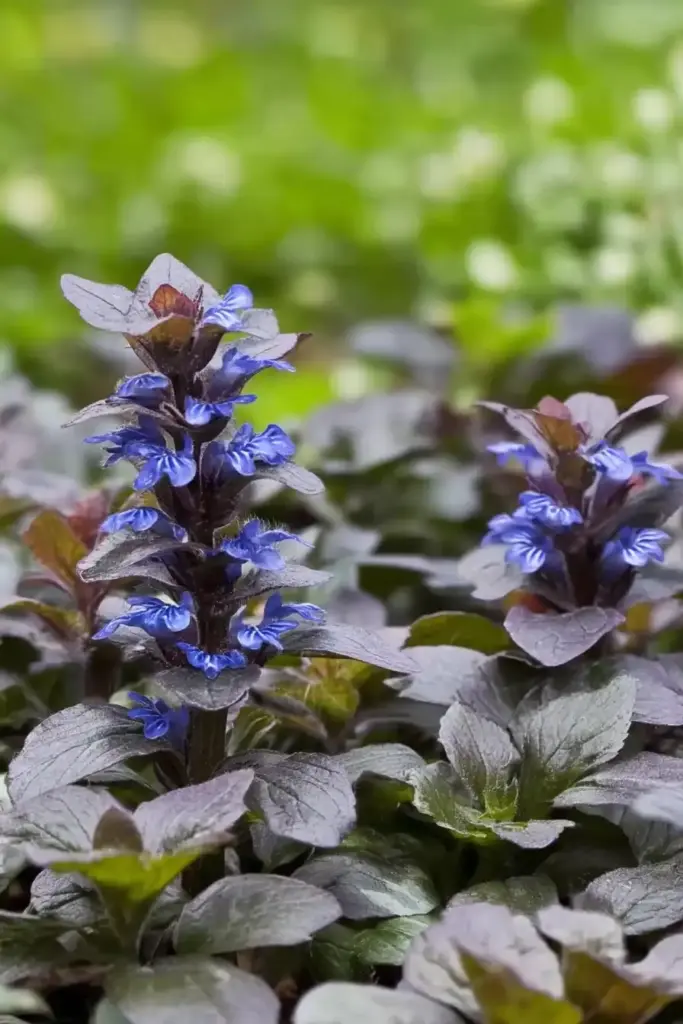
Ajuga is a powerhouse when it comes to covering ground quickly while adding rich, vibrant color. This low-growing perennial spreads via stolons, forming dense mats of foliage that thrive even in shadier garden areas.
🌿 Why It Works
- Colorful foliage: Comes in shades of bronze, deep purple, green, or variegated combinations.
- Spring flower spikes: Adds vertical interest with blue, violet, or white blooms.
- Tolerates foot traffic: Can handle occasional walking, especially along stone paths.
🌼 Ideal Uses
- Under trees or shrubs where grass struggles
- Along shaded walkways or borders
- As a colorful filler in container gardens
🌱 Quick Growing Guide
- USDA Zones: 4–10
- Light: Full to part shade
- Soil: Moist, well-drained
- Height: Up to 9 inches (flowers included)
Maintenance Tip: Ajuga can spread rapidly — trim or divide as needed to keep it within boundaries and avoid crowding other plants.
5. Creeping Jenny (Lysimachia nummularia, also known as Moneywort)

With its trailing stems and coin-shaped golden leaves, Creeping Jenny adds a splash of bright color to garden paths and stepping stone walkways. It’s a fast-spreading perennial that hugs the ground tightly and tolerates light foot traffic.
🌿 Why It Works
- Eye-catching foliage: Vivid chartreuse to golden green tones brighten shaded areas.
- Trailing habit: Fills gaps quickly, making it great for softening hard edges.
- Adaptable: Performs well in both sun and part shade.
🌼 Bonus Features
- Produces dainty yellow flowers in late spring
- Cascades beautifully from containers or over rock walls
- Suppresses weeds with dense coverage
🌱 Quick Growing Guide
- USDA Zones: 3–9
- Light: Full sun to part shade
- Soil: Moist, well-drained
- Height: Up to 6 inches
Pro Tip: In ideal conditions, Creeping Jenny spreads quickly — consider planting it in controlled areas or containers if you’re concerned about its vigor.
6. Portulaca (Portulaca grandiflora, commonly known as Moss Rose)
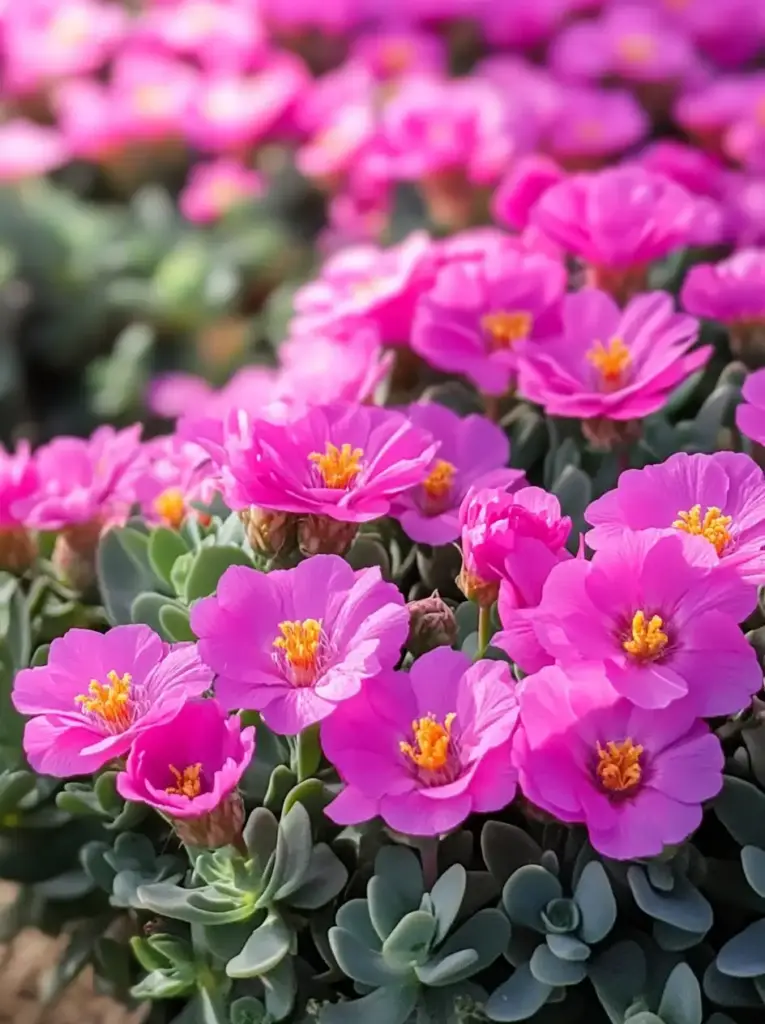
If you need a ground cover that can handle intense summer heat and poor soil — and still bloom like crazy — Portulaca is the answer. This annual in most zones delivers vibrant, rose-like flowers and needle-like foliage that rebounds easily from foot traffic.
🌿 Why It Works
- Highly drought-tolerant: Perfect for hot, sunny spots with little irrigation.
- Vivid blooms: Produces a rainbow of flower colors — red, yellow, orange, pink, white, and more.
- Self-sowing: Returns on its own in warm climates or well-established beds.
🌼 Ideal Uses
- Along sunny garden paths
- Between stepping stones in xeriscaped areas
- In container edges where it can trail and spill over
🌱 Quick Growing Guide
- USDA Zones: 10–11 (perennial); grown as an annual in cooler zones
- Light: Full sun
- Soil: Well-drained, sandy or rocky
- Height: Up to 9 inches
Pro Tip: Portulaca closes its flowers in the evening and on cloudy days — plant where you can enjoy its blooms during peak sun hours.
7. Scotch Moss (Sagina subulata ‘Aurea’)

Don’t be fooled by its delicate appearance — Scotch moss is surprisingly resilient. This bright, golden-green ground cover forms a soft, cushiony mat that sparkles in garden paths and between stones, especially in cooler climates.
🌿 Why It Works
- Soft underfoot: Creates a moss-like texture that tolerates light steps.
- Low and dense: Stays compact and hugs the ground, filling small crevices beautifully.
- Seasonal flowers: Tiny white blooms appear in spring, adding a gentle touch of charm.
🌼 Ideal Uses
- Between flagstones or pavers in shady walkways
- Rock gardens with moisture-retentive soil
- Small lawn alternatives in protected spaces
🌱 Quick Growing Guide
- USDA Zones: 4–8
- Light: Full sun to part shade (afternoon shade in hot climates is best)
- Soil: Moist, well-drained
- Height: About 1 inch
Care Tip: Scotch moss needs consistent moisture to stay lush — don’t let it dry out, especially during summer heatwaves.
8. Dwarf Mondo Grass (Ophiopogon japonicus ‘Nana’)
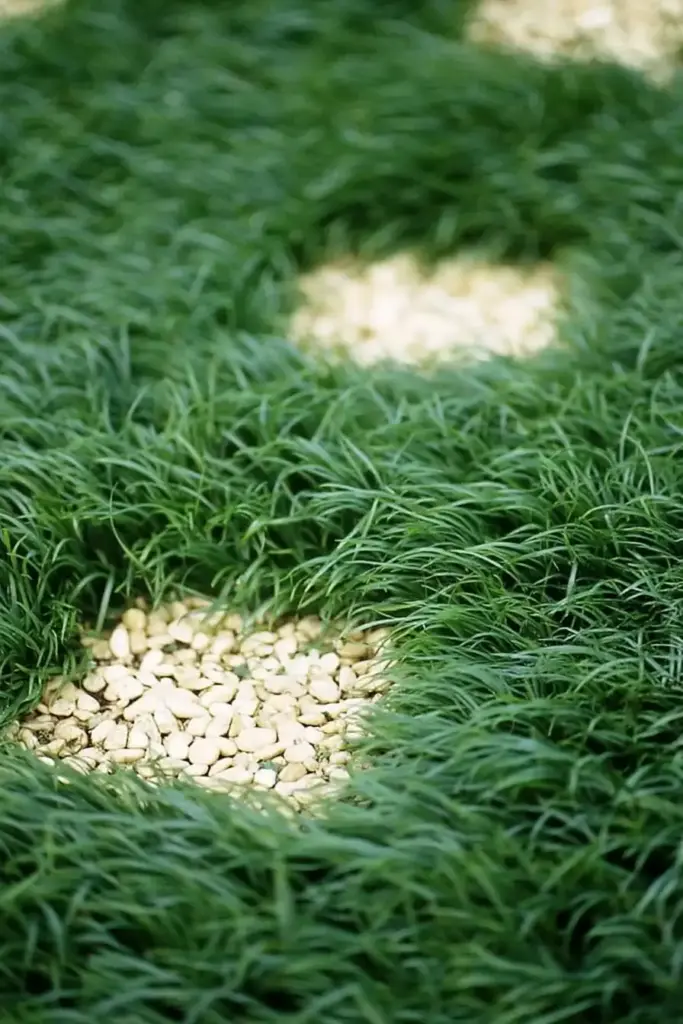
For a refined, grass-like look with minimal upkeep, dwarf mondo grass is a standout. This tidy, clumping perennial grows slowly and stays low to the ground, making it a smart choice for pathways and modern garden designs.
🌿 Why It Works
- Grass alternative: Offers the lush look of turf with none of the mowing.
- Shade-tolerant: Thrives in partial sun to full shade.
- Tough and compact: Handles light foot traffic without losing shape.
🌼 Ideal Uses
- Between stepping stones in shaded paths
- Around patios or under trees
- In modern or Japanese-style gardens
🌱 Quick Growing Guide
- USDA Zones: 7–10
- Light: Part shade to full shade
- Soil: Moist, well-drained
- Height: Around 3 inches
Design Tip: Plant dwarf mondo grass in tight rows between flagstones or bricks for a clean, architectural effect that’s both functional and beautiful.
9. Creeping Phlox (Phlox subulata)
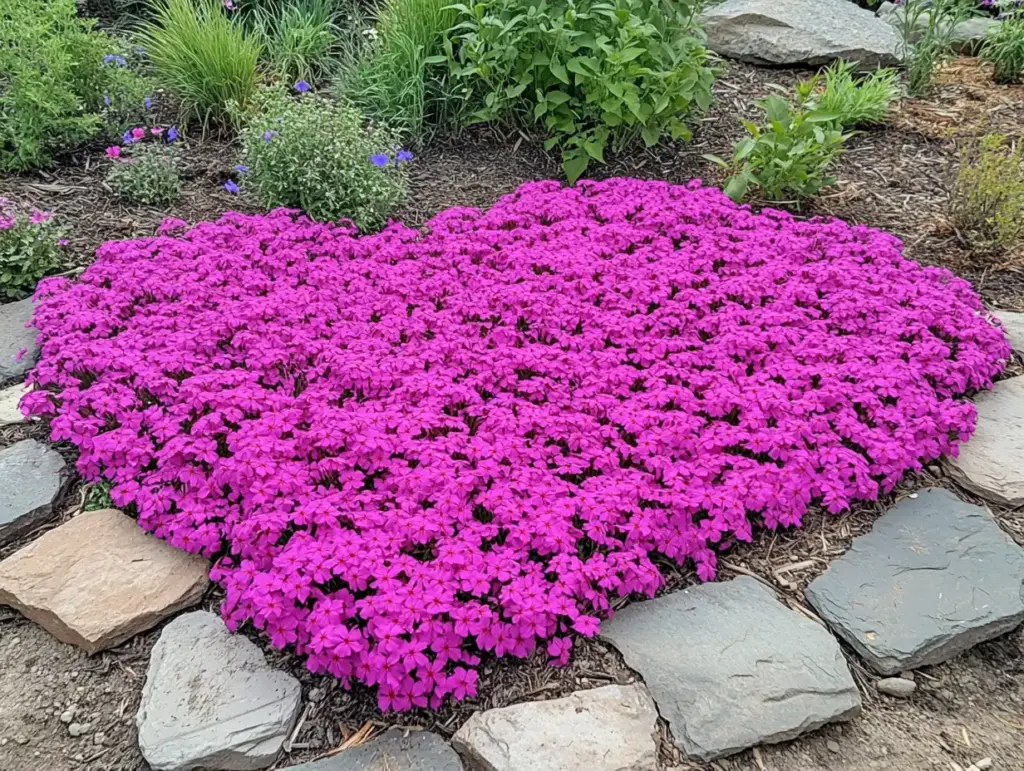
If you want a spring showstopper that also doubles as a walkable ground cover, creeping phlox delivers. This hardy perennial forms dense mats of needle-like foliage and erupts into vibrant blooms each spring, creating a carpet of color that’s hard to beat.
🌿 Why It Works
- Vivid spring blooms: Available in pink, purple, white, and blue.
- Spreading habit: Covers slopes and gaps quickly while suppressing weeds.
- Foot traffic friendly: Can tolerate light use on garden paths and borders.
🌼 Ideal Uses
- Sloping pathways or retaining walls
- Sunny garden edges and borders
- Ground filler for rock gardens and dry spots
🌱 Quick Growing Guide
- USDA Zones: 3–8
- Light: Full sun
- Soil: Well-drained; tolerates dry conditions once established
- Height: Up to 6 inches
Seasonal Note: While creeping phlox steals the show in early spring, its dense green mat keeps looking sharp through the rest of the growing season.
10. Snow-in-Summer (Cerastium tomentosum)
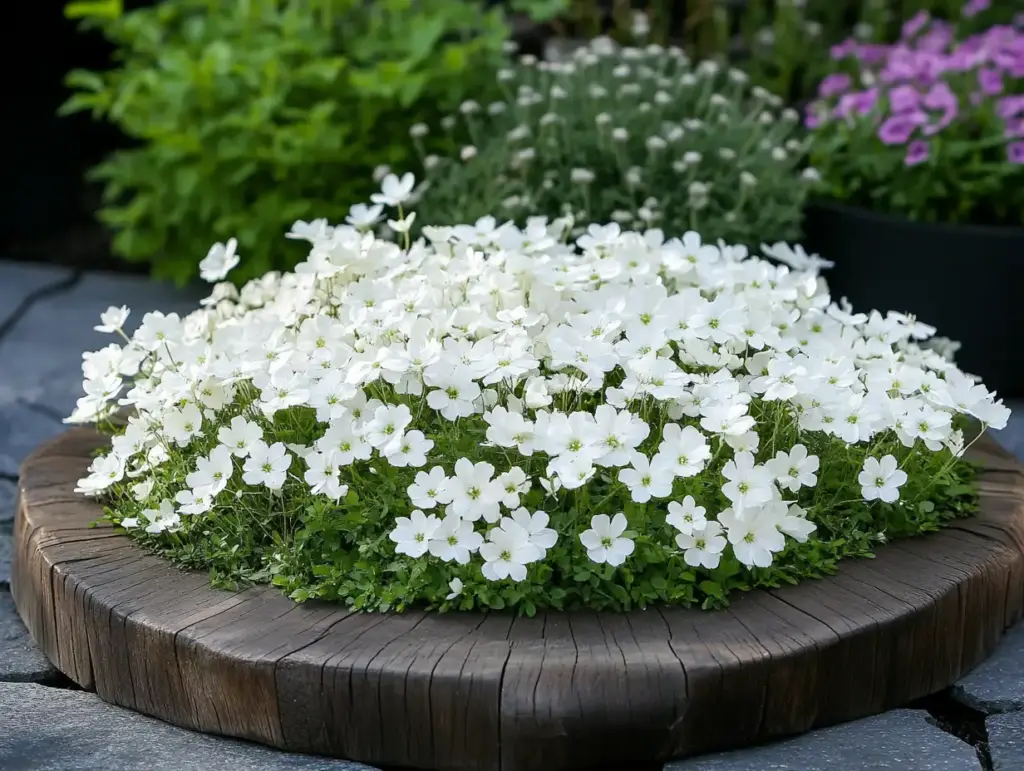
True to its name, Snow-in-Summer creates a frosty visual with its silver-gray foliage and blanket of small, white blooms that arrive in late spring to early summer. This cold-hardy perennial is ideal for brightening up tough, dry spots in the garden.
🌿 Why It Works
- Silvery foliage: Offers year-round visual interest, even without flowers.
- Mass blooming: Produces a drift of starry white blooms in early summer.
- Drought-tolerant: Thrives in dry, poor soils with little care.
🌼 Ideal Uses
- Along gravel or stone pathways in full sun
- In rock gardens or on slopes where erosion is a concern
- As a reflective border to contrast darker greens
🌱 Quick Growing Guide
- USDA Zones: 3–10
- Light: Full sun
- Soil: Well-drained and sandy; avoid overly rich or moist soil
- Height: Up to 12 inches when in bloom
Maintenance Tip: Shear back after flowering to keep plants tidy and to encourage fuller foliage growth.
11. Soapwort (Saponaria officinalis)

Once used for making soap, soapwort is now valued more for its beauty and resilience in the garden. This old-fashioned perennial combines practical hardiness with clusters of delicate flowers — and it’s one of the more unique walkable ground cover options available.
🌿 Why It Works
- Historic utility: Leaves contain saponins, giving the plant mild soap-like properties.
- Charming blooms: Produces clusters of pink, red, or white flowers in summer.
- Tolerates poor soils: Thrives in areas where other plants may fail.
🌼 Ideal Uses
- Rock gardens and sloped paths
- Edging for flower beds or sunny walkways
- Mixed with wildflower plantings for a natural look
🌱 Quick Growing Guide
- USDA Zones: 3–9
- Light: Full sun to part shade
- Soil: Well-drained, slightly alkaline preferred
- Height: Up to 2 feet
Wildlife Bonus: Soapwort is deer-resistant and attracts pollinators, making it a great choice for eco-friendly garden designs.
12. Baby Tears (Soleirolia soleirolii)

With its dense, cushiony foliage and tiny round leaves, Baby Tears adds a soft, vibrant texture to garden floors. While it’s best known as a houseplant, in warm, humid regions it makes a stunning walkable ground cover for shaded, moisture-rich areas.
🌿 Why It Works
- Moss-like appearance: Creates a dense mat of bright green, ferny foliage.
- Excellent for shade: Thrives where sunlight is minimal and other ground covers struggle.
- Delicate yet resilient: Handles light foot traffic with care.
🌼 Ideal Uses
- Shady garden nooks or under ferns and trees
- Moist, protected spaces like courtyard paths
- Between pavers in covered or partially sheltered walkways
🌱 Quick Growing Guide
- USDA Zones: 9–11
- Light: Full to partial shade
- Soil: Moist, well-drained
- Height: Up to 6 inches
Care Tip: Baby Tears needs high humidity and consistent watering — not ideal for dry or windy sites unless in containers or well-sheltered areas.
13. Mazus (Mazus reptans)
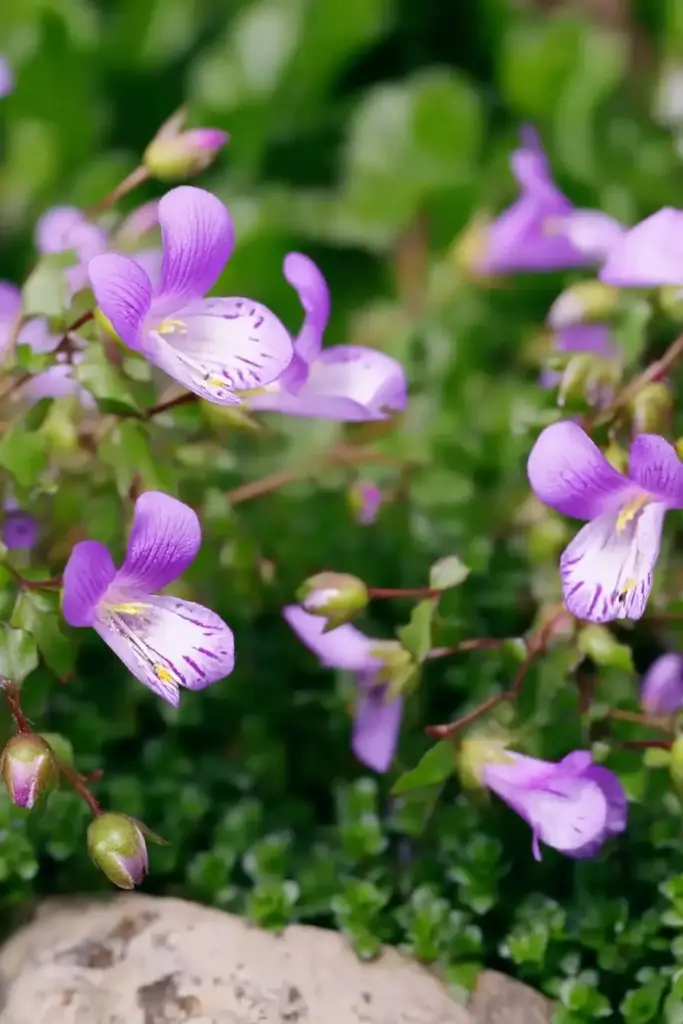
Mazus is a quick-spreading, low-profile ground cover that thrives in moist areas and bursts into bloom in spring with delicate, orchid-like flowers. It’s a standout choice for gardeners seeking a vibrant, walkable option that hugs the ground tightly.
🌿 Why It Works
- Fast spreader: Quickly forms a dense mat, ideal for filling bare spots.
- Foot traffic ready: Tough enough to grow between stepping stones or in garden paths.
- Long-lasting foliage: Remains attractive even when not in bloom.
🌼 Floral Features
- Lavender to violet flowers with yellow and white markings
- Blooms in late spring and early summer
- Adds a whimsical, woodland feel to shaded or semi-shaded gardens
🌱 Quick Growing Guide
- USDA Zones: 5–8
- Light: Full sun to part shade
- Soil: Moist to wet soil, but well-drained
- Height: Around 3 inches
Watering Tip: Mazus enjoys consistent moisture but doesn’t tolerate soggy soil — plant where drainage is good but conditions stay relatively damp.
14. Hens-and-Chicks (Sempervivum spp.)
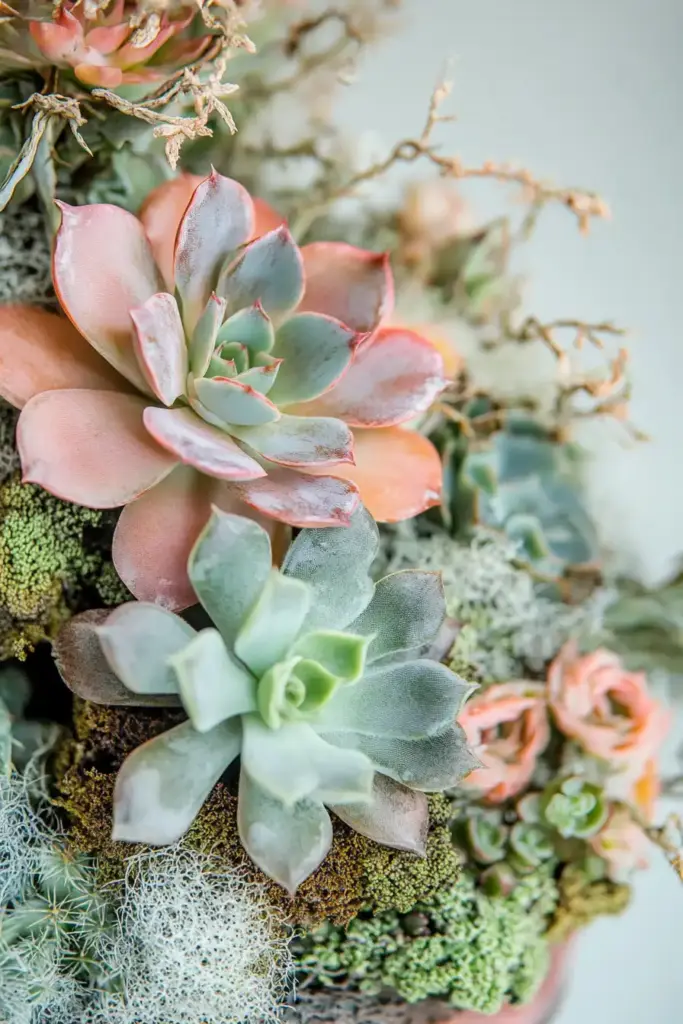
For a sculptural touch to your path or rock garden, Hens-and-Chicks offer both resilience and beauty. These small succulents form tight rosettes that multiply into colonies — each “hen” producing several “chicks” that slowly spread across your garden floor.
🌿 Why It Works
- Striking appearance: Geometric rosettes in shades of green, purple, or red.
- Extremely drought-tolerant: Requires very little water and thrives in dry conditions.
- Excellent for cracks and crevices: Perfect for planting between stones or in walls.
🌼 Ideal Uses
- Between stone pavers in low-traffic areas
- Rock gardens or gravel paths
- Vertical wall planters or containers
🌱 Quick Growing Guide
- USDA Zones: 3–8
- Light: Full sun
- Soil: Well-drained, gritty or sandy soil
- Height: Up to 12 inches (usually smaller)
Foot Traffic Warning: While Hens-and-Chicks are tough, they don’t love to be walked on frequently — best used in low-traffic zones or as accent edging along paths.
15. Corsican Mint (Mentha requienii)
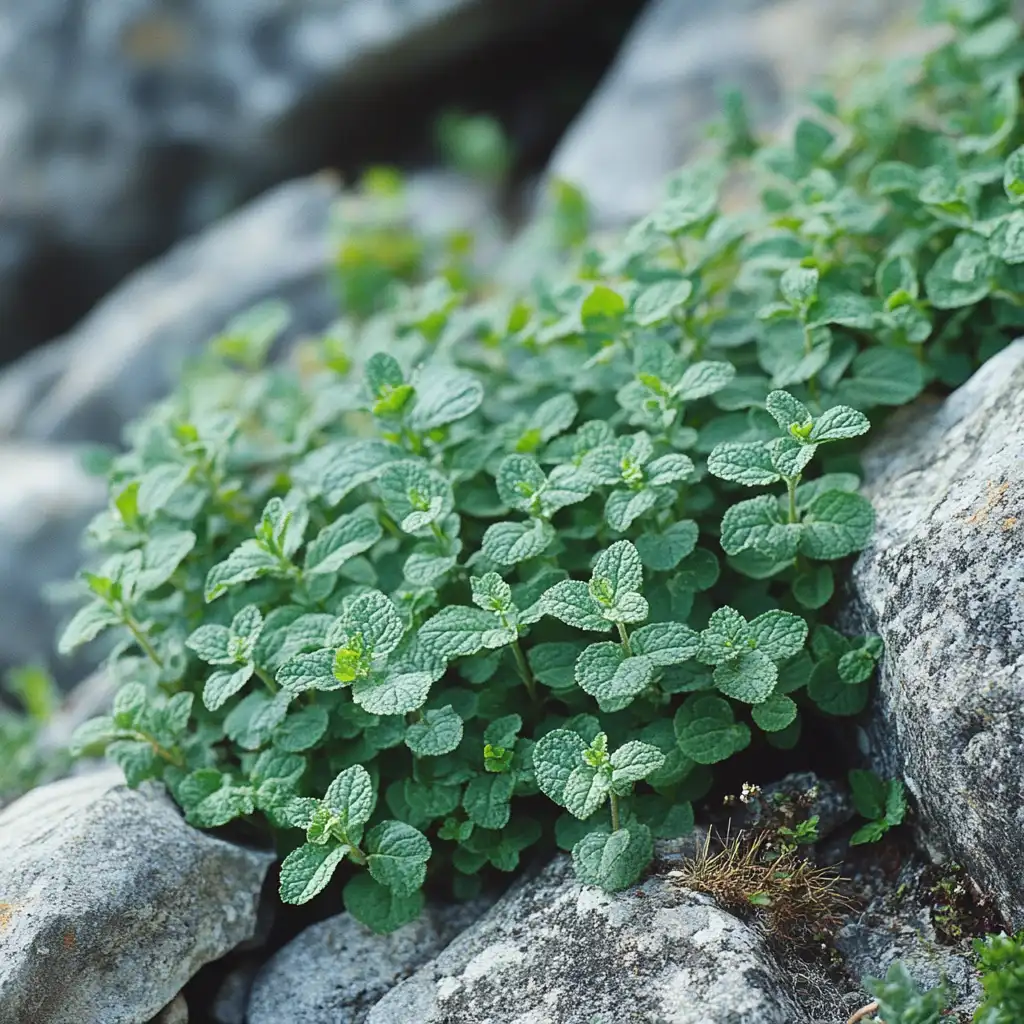
For a lush, aromatic carpet that releases scent with every step, Corsican mint is a delightful walkable ground cover. This tiny-leaved perennial forms tight mats and thrives in moist, shaded spaces — ideal for softening garden paths with color, texture, and fragrance.
🌿 Why It Works
- Aromatic foliage: Emits a fresh mint scent when brushed or stepped on.
- Tiny lilac blooms: Appears in late summer, subtle but lovely.
- Mat-forming: Spreads densely to cover ground without becoming invasive.
🌼 Ideal Uses
- Between stepping stones or flagstones
- Shady garden paths or borders
- Around herb gardens or water features
🌱 Quick Growing Guide
- USDA Zones: 6–9
- Light: Part shade to full shade (with some sun in cooler climates)
- Soil: Moist, well-drained
- Height: 1–3 inches
Design Tip: Pair Corsican mint with stepping stones so every footstep releases its fresh scent — it’s like nature’s aromatherapy built right into your walkway.
❓ Frequently Asked Questions (FAQ)
1. What is walkable ground cover?
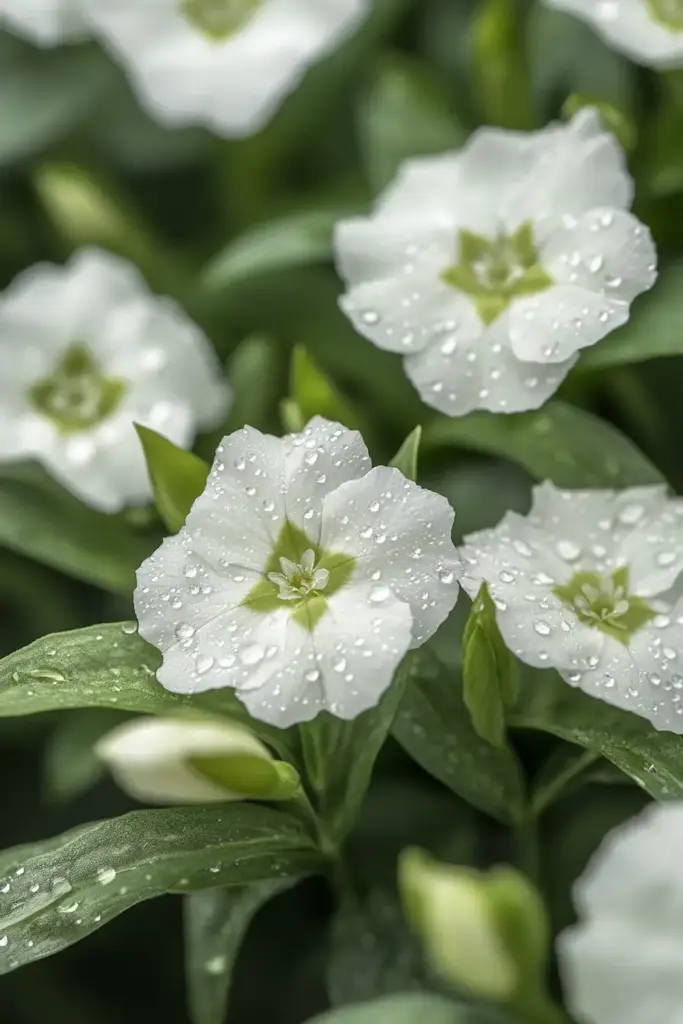
Walkable ground cover refers to low-growing plants that can tolerate light to moderate foot traffic. These plants are ideal for planting between stepping stones, along pathways, or as lawn alternatives, offering beauty, texture, and practicality.
2. What is the best walkable ground cover for sunny areas?
Some of the best sun-loving walkable ground covers include Creeping Thyme, Sedum, Portulaca, and Snow-in-Summer. These plants thrive in full sun and often have the added benefit of being drought-tolerant.
3. Which walkable ground covers are good for shade?
Top picks for shady spots include Ajuga, Baby Tears, Dwarf Mondo Grass, and Corsican Mint. These plants perform well with partial to full shade and provide lush coverage in areas where grass struggles.
4. Can I replace grass with walkable ground cover?
Yes! Many walkable ground covers like Blue Star Creeper, Creeping Jenny, and Mazus are excellent lawn alternatives. They require less water, no mowing, and add visual interest year-round.
5. Are walkable ground covers low maintenance?
Most walkable ground covers are very low maintenance once established. Choose the right plant for your climate and soil, and you’ll enjoy an attractive, easy-care landscape that stands up to foot traffic.
6. Will walkable ground cover survive in winter?
Many ground covers, such as Creeping Phlox, Thyme, and Hens-and-Chicks, are cold-hardy and survive winter in zones 3–8 or higher. Always check the USDA zone suitability for each plant before planting.
7. How do I plant walkable ground cover between pavers?
Start by spacing small plugs or divisions of your chosen ground cover between stones. Ensure proper soil preparation and watering as they establish. Most varieties will fill in the gaps within one season.
🌿 Final Thoughts on Walkable Ground Cover
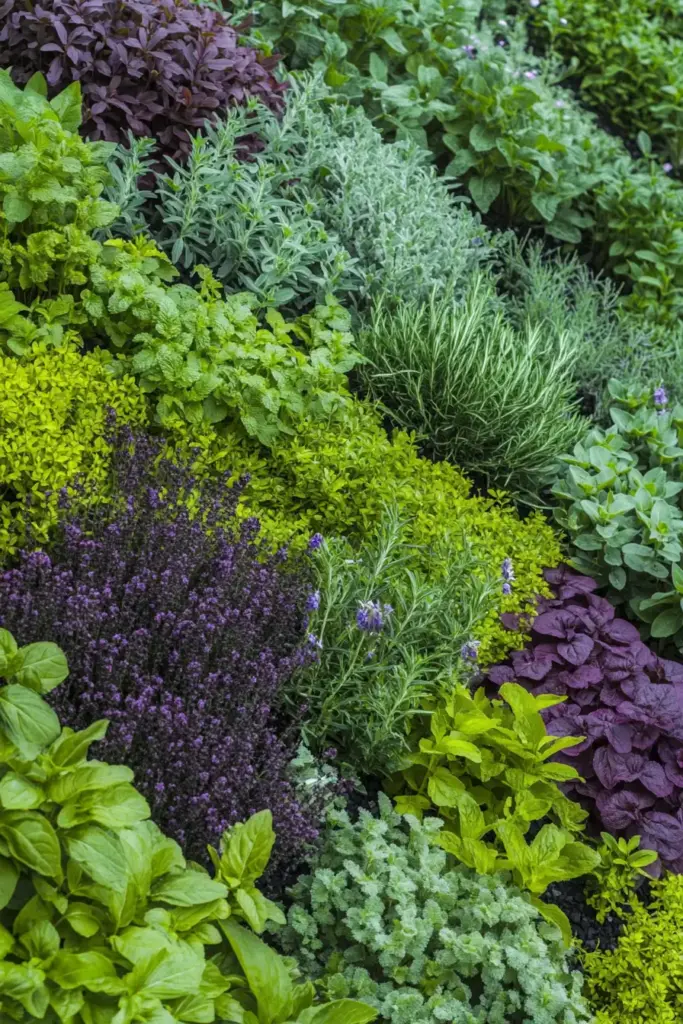
Ground cover plants can turn ordinary garden paths into something truly special. From drought-tough succulents like Sedum to shade-loving spreads like Corsican Mint, there’s a variety for every light condition and design goal.
Need help planning for sun-drenched areas? Browse our guide on low-maintenance full sun perennials. For finishing touches, pair your paths with these beautiful perennial border ideas. With the right plant mix, your landscape will be both inviting and easy to maintain.
🌿 Love gardening inspiration? Follow me on Pinterest for bold plant ideas, tips, and seasonal color!
More Posts
